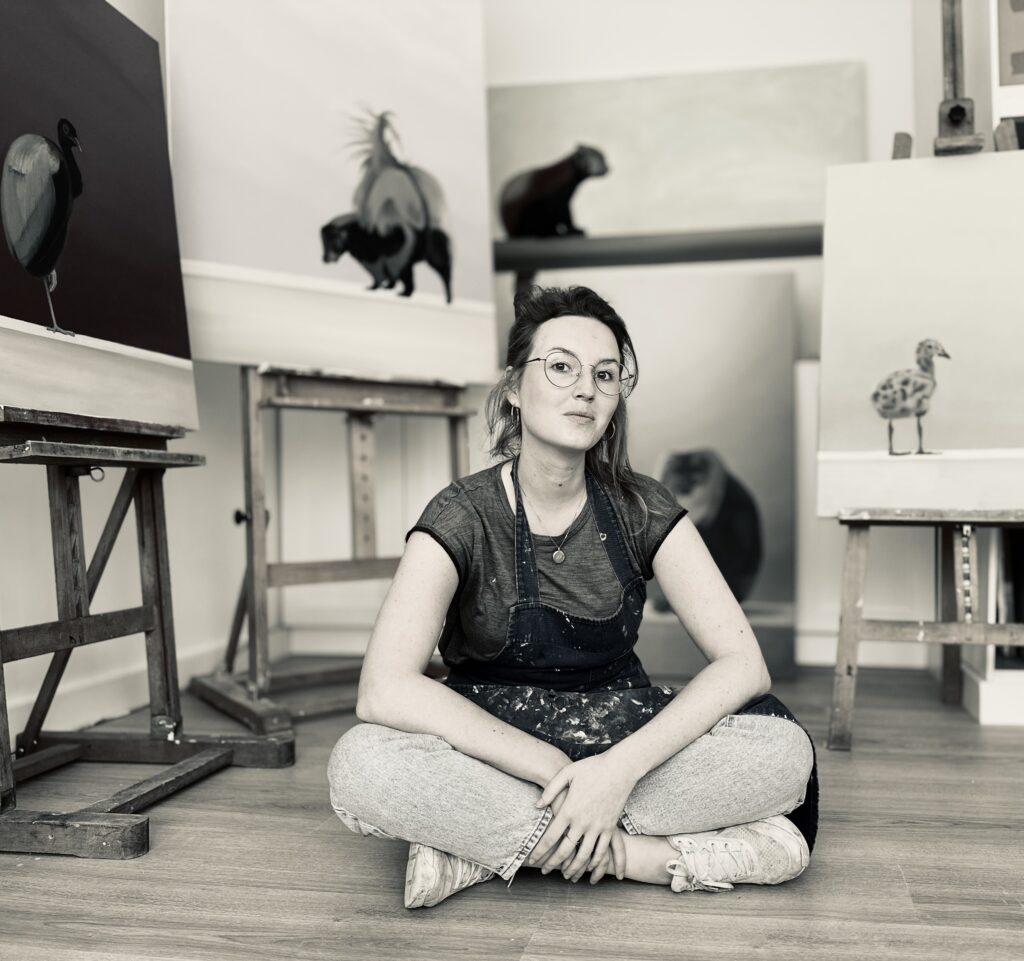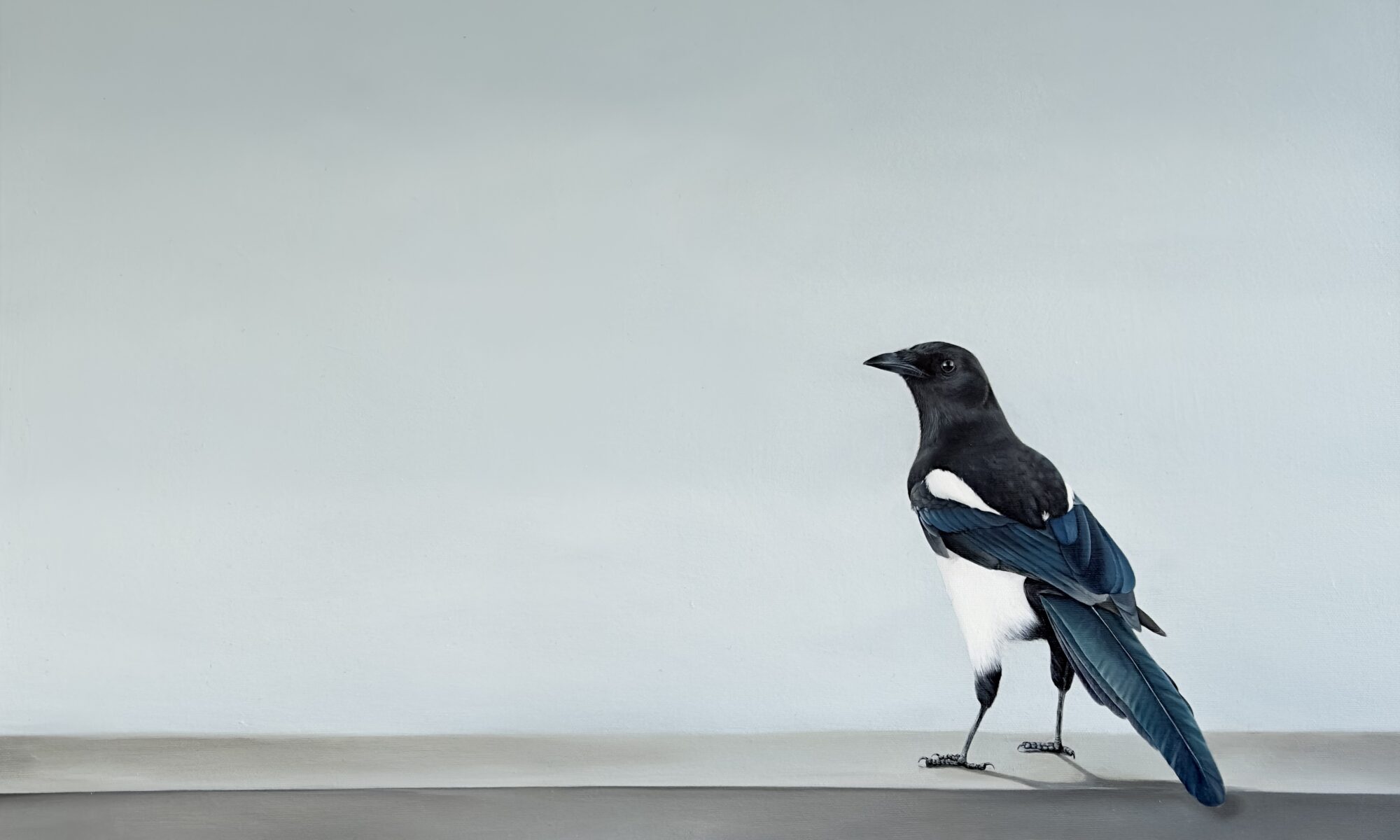For the past four years I’ve specialised in painting life sized animals in a minimal environment. I started to paint birds as a technical challenge but it quickly transformed in a search for control, quietness and connection.
One of the fascinating things about animals is that we never know what they are thinking about. This makes them mysterious but also approachable because it allows us to fantasise. As humans we cannot help but see or project emotions on animals – even if they have little to no mimicry like birds. With my art I want to explore and make way for this interaction between viewer and subject.
Each of my paintings needs to comply with my own set of rules. The first rule is that the animal is portrayed in life size and highly detailed. This amplifies the suggestion of reality and should almost stimulate other senses. The second rule is the negative space around the subject. I often place my subjects off centre to make the space around the animal even bigger. It suggests the animal has room to move within the environment. Lastly, the colours of the surroundings need to be harmonious and supportive to the animal. These colours set a calming and quieting tone (unlike the world we live in) for the painting making it easier for the viewer to just focus on the animal. Often, the surface where the animal stands on seems to be made from natural materials but polished, only possible by human manufactory. There is a lack of natural environment to the animal. This again amplifies the focus on the animal for the spectator, but also has an awkwardness to it and raises the question how far we humans go in moulding the world in how it suits us.
Before I start a new painting I pick my subject carefully. I prefer them to be slightly odd looking with a variety in textures or patterns. Then I search endlessly for the right reference material (photo’s, video’s, documentaries) until I feel confident I have enough to realise the artwork I have in mind. The painting process is traditional by using just oils, building up the painting layer by layer. Each layer needs to dry before the next and each of them becomes more detailed until the animal comes to life.

